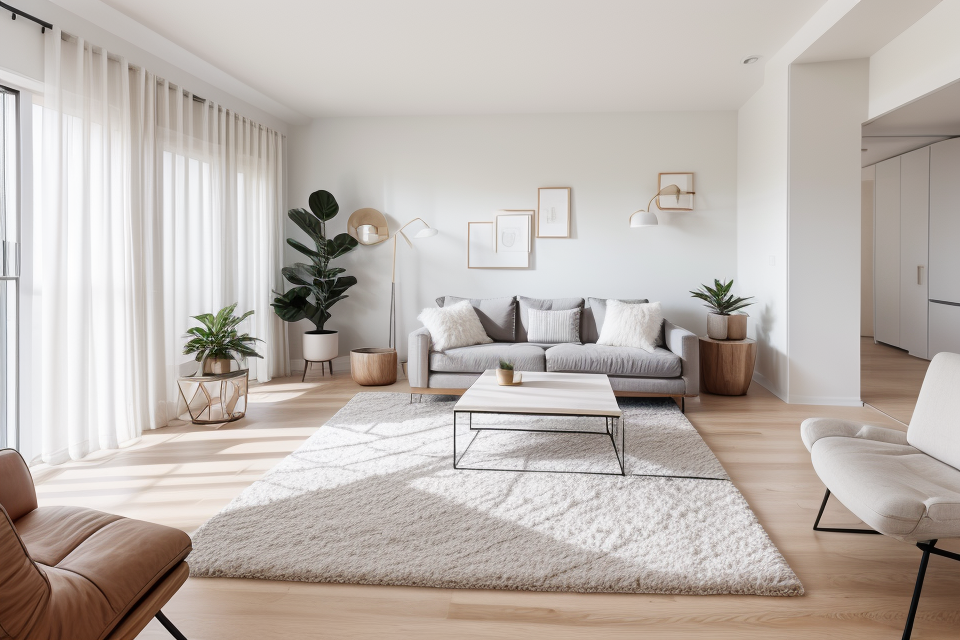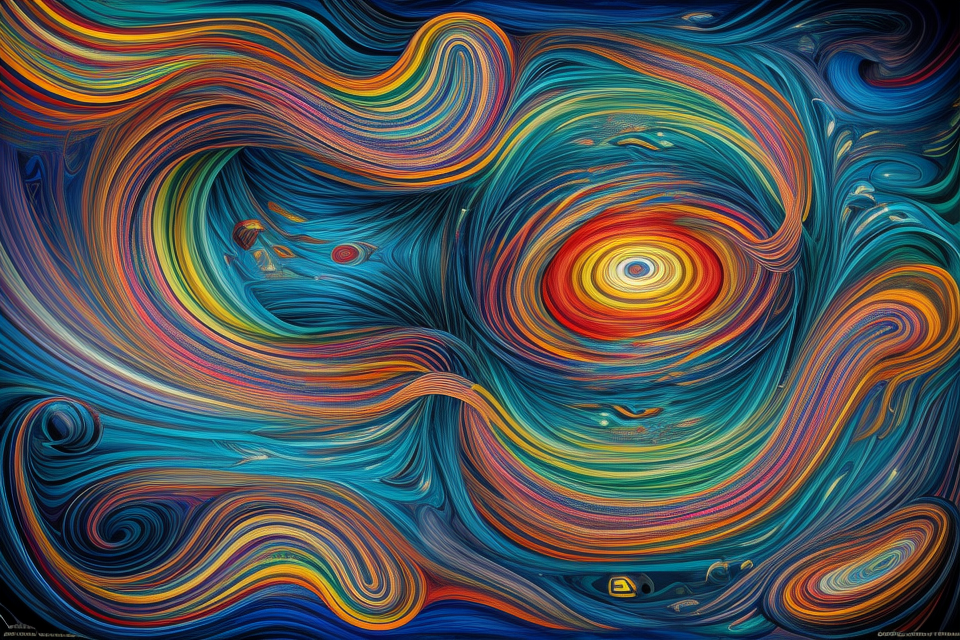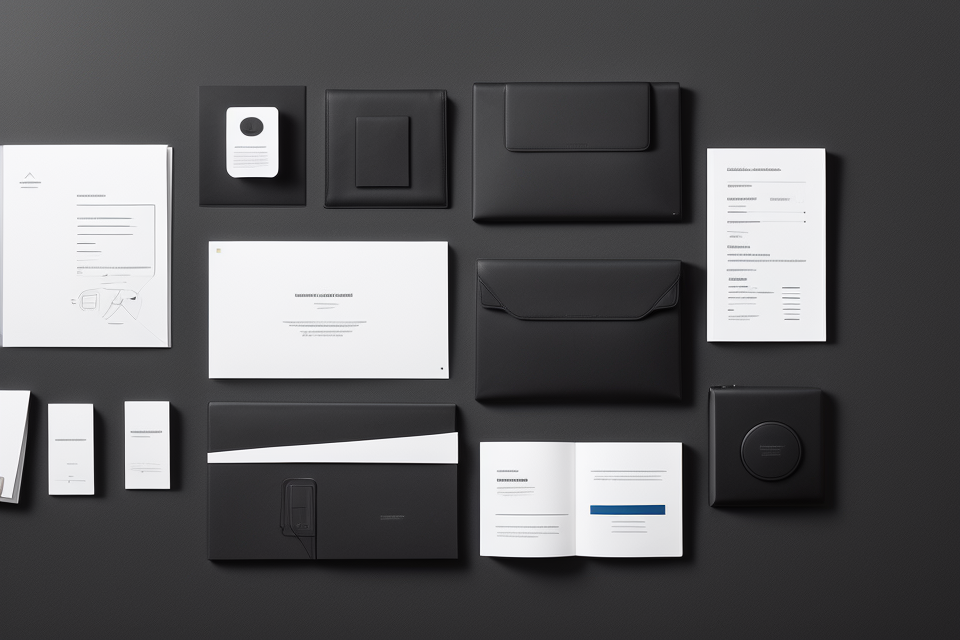Interior design concepts are the foundation of any successful design project. They encompass the ideas, beliefs, and philosophies that guide the design process. A well-defined interior design concept provides a clear direction for the project, ensuring that all elements of the design work together in harmony.
The fundamentals of interior design concepts include understanding the client’s needs and desires, establishing a clear design brief, researching and analyzing the site, and creating a cohesive design scheme.
This article will delve into the intricacies of interior design concepts, exploring the various elements that contribute to a successful design project. We will discuss the importance of research, planning, and communication in the design process, and provide practical tips for developing a strong interior design concept.
Whether you are a seasoned designer or just starting out, understanding the fundamentals of interior design concepts is essential for creating beautiful and functional spaces that meet the needs of your clients.
Defining Interior Design Concepts
Elements of Interior Design
Space Planning
Space planning is a crucial element of interior design, as it involves the strategic arrangement of furniture, fixtures, and architectural features to create a functional and aesthetically pleasing space. It encompasses determining the appropriate use of each area within a room or a building, considering factors such as traffic flow, natural light, and acoustics. A well-planned space can improve the overall functionality and aesthetic appeal of a room, making it more conducive to the activities and moods intended by the occupants.
Layout and Flow
Layout and flow refer to the organization of furniture, fixtures, and architectural features within a space to create a cohesive and harmonious arrangement. The flow of a room can be created through the use of architectural features such as doors, windows, and hallways, as well as the placement of furniture and decor. The goal of good layout and flow is to create a sense of balance and proportion, ensuring that each element within the space works together to create a visually appealing and functional space.
Color Theory
Color theory is an essential element of interior design, as it involves the use of color to create a specific mood or atmosphere within a space. Different colors can evoke different emotions and can be used to create a sense of depth, warmth, or coolness. Interior designers use color theory to select paint colors, choose furnishings and fabrics, and to create a cohesive and harmonious design scheme. The right color choices can make a space feel larger or smaller, brighter or darker, and can greatly impact the overall mood and atmosphere of a room.
Lighting Design
Lighting design is a critical element of interior design, as it can greatly impact the ambiance and functionality of a space. Different types of lighting, such as natural light, artificial light, and task lighting, can be used to create different moods and to highlight specific areas or features within a room. Lighting design also involves the use of lighting fixtures, such as lamps, chandeliers, and pendant lights, to enhance the overall aesthetic appeal of a space. Proper lighting design can make a space feel more inviting, relaxing, or energizing, depending on the desired mood and function of the space.
Furniture and Decor Selection
Furniture and decor selection is a crucial element of interior design, as it involves the use of furniture, decorative objects, and accessories to create a cohesive and aesthetically pleasing design scheme. Interior designers consider factors such as style, function, and scale when selecting furniture and decor, ensuring that each piece works together to create a harmonious and balanced arrangement. The right furniture and decor choices can greatly impact the overall look and feel of a space, making it more inviting, comfortable, or stylish, depending on the desired aesthetic and function of the space.
Principles of Interior Design
Interior design concepts are the fundamental principles that guide the creation of functional, aesthetically pleasing, and comfortable spaces. The following are the key principles of interior design:
Balance
Balance refers to the arrangement of visual weight in a room, creating stability and harmony. There are three types of balance: symmetrical, asymmetrical, and radial. Symmetrical balance involves arranging objects or furniture in a mirror-image pattern around a central point. Asymmetrical balance creates a more dynamic arrangement, while radial balance is centered around a focal point.
Harmony
Harmony is the use of colors, textures, and styles that work together to create a cohesive look. This can be achieved by selecting a color scheme, such as monochromatic, complementary, or analogous, and repeating it throughout the space. Harmony can also be achieved by using similar textures and styles in different areas of the room.
Unity
Unity is the integration of all the elements in a room to create a cohesive look. This can be achieved by using a consistent color scheme, selecting complementary furniture and accessories, and repeating patterns and textures throughout the space. Unity creates a sense of coherence and helps to define the purpose of the room.
Proportion
Proportion refers to the relationship between different elements in a room. Proportion is important because it helps to create a sense of balance and scale. For example, a large sofa may look out of place in a small room, while a small table may look lost in a large space. Proportion can be achieved by selecting furniture and accessories that are appropriate for the size of the room.
Scale
Scale refers to the size of objects in relation to the space they occupy. Objects that are too large or too small can create a sense of imbalance and discomfort. Scale can be achieved by selecting furniture and accessories that are appropriate for the size of the room and the space they occupy. It is also important to consider the height of the ceiling and the size of the windows when selecting furniture and accessories.
The Role of Interior Design Concepts in Residential Spaces
Living Rooms
Creating a Comfortable and Inviting Atmosphere
One of the primary objectives of interior design concepts in living rooms is to create a comfortable and inviting atmosphere. This can be achieved through careful consideration of the color scheme, lighting, and furniture arrangement. The use of warm and neutral colors, such as beige, cream, and soft blue, can create a relaxing and welcoming ambiance. The lighting should be designed to create a balance between ambient, task, and accent lighting, ensuring that the room is well-lit without being harsh or overwhelming. Additionally, the furniture arrangement should be carefully considered to ensure that the room is functional and conducive to relaxation and conversation.
Designing for Functionality and Style
In addition to creating a comfortable atmosphere, interior design concepts for living rooms should also focus on functionality and style. This means considering the layout of the room and the needs of the people who will be using it. For example, if the living room serves as a home office, it should be designed to accommodate a desk and comfortable seating for working and meetings. Additionally, the style of the room should reflect the personal preferences of the occupants, while also being visually appealing and cohesive. This can be achieved through the use of a consistent color scheme, coordinated furniture and decor, and the incorporation of statement pieces that reflect the homeowners’ personal style.
Choosing the Right Furniture and Decor
Finally, the choice of furniture and decor is critical to the success of interior design concepts in living rooms. The furniture should be functional, comfortable, and stylish, while also being appropriately sized for the room. The decor should complement the furniture and overall design concept, while also reflecting the personal style of the occupants. This can include items such as artwork, rugs, and pillows, as well as accessories such as vases, lamps, and candles. It is important to choose pieces that not only look good but also serve a functional purpose, such as providing additional seating or storage. By carefully considering the choice of furniture and decor, interior design concepts can help to create a living room that is both functional and stylish, comfortable and inviting.
Bedrooms
Creating a relaxing and peaceful space is one of the primary objectives of interior design in bedrooms. A well-designed bedroom can provide a calm and serene environment that promotes restful sleep and relaxation. To achieve this, it is important to consider the overall mood and ambiance of the space, as well as the specific needs and preferences of the occupant.
Optimizing storage and functionality is another key aspect of interior design in bedrooms. Bedrooms often have limited space, so it is important to make the most of every inch. This can be achieved through the use of built-in storage solutions, such as cabinets, shelves, and drawers, as well as the strategic placement of furniture to maximize space.
Choosing a color scheme and style is also crucial in bedroom design. The color of the walls and furnishings can have a significant impact on the overall mood and feel of the space. Cool colors, such as blue and green, can create a calming and relaxing atmosphere, while warm colors, such as red and orange, can be energizing and invigorating. The style of the room can also be used to convey a particular mood or atmosphere, whether it be modern, traditional, or something in between.
Kitchens
Creating a functional and efficient workspace is essential in any kitchen design. This includes proper layout, storage solutions, and flow. Lighting and color schemes should also be considered to enhance the overall functionality of the space.
Choosing appliances and materials is a crucial aspect of kitchen design. Homeowners should consider their personal preferences, lifestyle, and budget when selecting appliances and materials. Energy efficiency and durability should also be taken into account.
Integrating style and personality is important in any kitchen design. This can be achieved through the selection of finishes, color schemes, and accessories. Homeowners should consider their personal style and the overall aesthetic they want to achieve in their kitchen. A cohesive and unique design can enhance the overall appeal and functionality of the space.
Bathrooms
Creating a Spa-like Oasis
In today’s fast-paced world, bathrooms have become more than just a space for personal hygiene. They have evolved into a private sanctuary where individuals can unwind and rejuvenate. Creating a spa-like oasis in a bathroom involves incorporating elements that promote relaxation and wellness. This can include the use of soft lighting, warm colors, and the strategic placement of plants or water features. Additionally, incorporating natural materials such as stone or wood can help to create a sense of tranquility and harmony.
Optimizing Space and Functionality
One of the biggest challenges in designing a bathroom is optimizing space and functionality. A well-designed bathroom should be both practical and aesthetically pleasing. This can be achieved by utilizing smart storage solutions, such as corner shelves or built-in cabinets, to maximize the use of available space. Additionally, multi-functional furniture pieces, such as a vanity with a built-in mirror, can help to save space while still providing ample storage.
Another important aspect of optimizing space in a bathroom is by considering the flow of the room. By strategically placing furniture and fixtures, such as the toilet and sink, designers can create a more efficient use of space. This can be achieved by placing the toilet in a corner and positioning the sink and vanity in a way that allows for easy access from the shower or bathtub.
Choosing Materials and Finishes
When it comes to choosing materials and finishes for a bathroom, it is important to consider both functionality and aesthetics. Materials such as ceramic or porcelain are practical choices for surfaces that come into contact with water on a regular basis, such as the shower or bathtub. However, they may not provide the same level of warmth and comfort as natural materials like stone or wood.
In terms of finishes, it is important to consider the overall look and feel of the bathroom. For example, a glossy finish on the tile can create the illusion of a larger space, while a matte finish can help to create a more intimate and cozy atmosphere. Additionally, the use of accent colors or patterns can help to add visual interest and create a more dynamic look.
Overall, the role of interior design concepts in bathrooms is to create a space that is both functional and aesthetically pleasing. By considering factors such as space optimization, material selection, and finishes, designers can create a bathroom that serves as a relaxing oasis for individuals to unwind and rejuvenate.
Interior Design Concepts for Commercial Spaces
Offices
Designing an office space requires careful consideration of the functional needs of the employees, the company culture, and the overall goals of the business. Here are some key concepts to keep in mind when designing an office:
Creating a Productive and Inspiring Workspace
An office should be designed to promote productivity and creativity. This can be achieved by creating a comfortable and inspiring workspace that encourages collaboration and communication. Consider incorporating elements such as natural light, comfortable seating, and open spaces for brainstorming and collaboration.
Choosing a Color Scheme and Style
The color scheme and style of an office can have a significant impact on employee mood and productivity. Bright and bold colors can increase energy levels and creativity, while calming colors such as blue and green can promote relaxation and focus. Consider the company culture and brand when choosing a color scheme and style, and make sure it aligns with the overall goals of the business.
Office spaces should be designed to optimize space and functionality. This can be achieved by using multifunctional furniture, such as desks that can be adjusted for standing or sitting, and storage solutions that maximize space while keeping items organized. Consider the flow of traffic in the office and design the space to promote efficiency and minimize distractions.
In addition to these key concepts, it’s important to consider the specific needs of the employees and the company when designing an office space. This may include features such as private offices, break rooms, and collaborative spaces. By taking the time to carefully plan and design an office space, businesses can create a productive and inspiring work environment that supports their goals and promotes the well-being of their employees.
Retail Spaces
Creating an Inviting and Memorable Shopping Experience
Interior design concepts for retail spaces play a crucial role in creating an inviting and memorable shopping experience for customers. A well-designed retail space can not only attract customers but also encourage them to make purchases and return to the store in the future. Here are some key elements to consider when designing a retail space:
- Store Layout: The layout of a retail space should be designed to encourage customers to move through the store in a natural and intuitive way. This can be achieved through the use of signage, displays, and visual cues.
- Lighting: Lighting is an essential element in creating a comfortable and inviting atmosphere for customers. The type and intensity of lighting can affect how customers perceive products and the overall ambiance of the store.
- Product Display: Product display is an important aspect of creating an inviting shopping experience. Displays should be visually appealing and effectively showcase products. This can be achieved through the use of creative display techniques, such as layering, grouping, and contrasting.
Choosing a Color Scheme and Style
Choosing a color scheme and style for a retail space is crucial in creating a unique and memorable shopping experience. Color can evoke different emotions and moods, and can also affect how customers perceive products. When choosing a color scheme, it is important to consider the target audience and the overall brand image.
- Brand Identity: The color scheme and style of a retail space should align with the brand identity and values of the company. This helps to create a cohesive and memorable brand experience for customers.
- Customer Demographics: The demographics of the target customer should also be considered when choosing a color scheme and style. For example, a younger demographic may respond well to bold and vibrant colors, while an older demographic may prefer more subdued and sophisticated colors.
Displaying Products Effectively
Displaying products effectively is essential in creating a visually appealing and inviting retail space. The way products are displayed can affect how customers perceive them and can also influence their purchasing decisions. Here are some tips for displaying products effectively:
- Grouping: Products can be grouped together based on their similarity or function. This can help customers to easily identify products and make connections between them.
- Contrast: Contrasting products can create visual interest and draw attention to specific items. This can be achieved through the use of color, texture, and form.
- Lighting: Lighting can be used to highlight specific products or areas of the store. This can draw attention to key items and create a more dynamic shopping experience.
Overall, interior design concepts for retail spaces play a critical role in creating an inviting and memorable shopping experience for customers. By considering key elements such as store layout, lighting, product display, color scheme, and style, retailers can create a unique and engaging shopping environment that appeals to their target audience.
Public Spaces
Creating a Welcoming and Accessible Environment
- In public spaces, the primary goal of interior design is to create a welcoming and accessible environment for all users.
- This includes considerations such as ADA compliance, wayfinding, and providing a comfortable and functional space for a diverse range of users.
-
Design elements such as lighting, color, and furniture can all play a role in creating a welcoming and accessible environment.
-
The color scheme and style of a public space can have a significant impact on the user experience.
- Warm and inviting colors such as soft blues and greens can create a calming and welcoming atmosphere, while brighter and more vibrant colors can be used to evoke energy and excitement.
-
The style of a public space can also impact the user experience, with minimalist and modern styles often being used to create a sense of sophistication and elegance, while more traditional styles can evoke a sense of comfort and familiarity.
-
Public spaces often have unique challenges when it comes to optimizing space and functionality.
- Design elements such as furniture layout, circulation patterns, and storage solutions can all play a role in maximizing the utility of a space while minimizing its footprint.
- It is important to consider the specific needs of the users of the space, as well as any special requirements such as accessibility or security, when optimizing the functionality of a public space.
FAQs
1. What is interior design concept?
Interior design concept refers to the overall idea or plan that guides the design of a space. It encompasses the visual elements, such as color, texture, and form, as well as the functional aspects, such as layout and circulation. The concept serves as a blueprint for the design of a space and helps to establish a cohesive look and feel.
2. Why is it important to have a concept for interior design?
Having a well-defined concept for interior design is important because it helps to ensure that the final result is cohesive and visually appealing. It also helps to guide decision-making during the design process and ensures that all elements of the design work together to achieve a specific look or feel. Without a clear concept, the design process can become disjointed and disorganized, leading to a final product that is unappealing or difficult to live with.
3. How do you develop an interior design concept?
Developing an interior design concept typically involves several steps. First, it is important to identify the purpose and function of the space. This will help to establish the overall style and aesthetic of the design. Next, consider the key elements of the design, such as color, texture, and form, and how they will work together to create a cohesive look. Finally, consider the layout and circulation of the space and how it will impact the overall design. With a clear understanding of these elements, you can begin to develop a concept that will guide the design of the space.
4. How do you communicate an interior design concept to clients or colleagues?
Communicating an interior design concept to clients or colleagues is important to ensure that everyone is on the same page and that the final result meets their expectations. One way to communicate the concept is through the use of mood boards, which are collections of images and materials that represent the overall look and feel of the design. Additionally, sketches and renderings can be used to show the layout and design of the space, while material and finish boards can be used to illustrate the specific elements and finishes that will be used in the design. By presenting the concept in a clear and organized manner, you can ensure that everyone understands the vision for the design.



